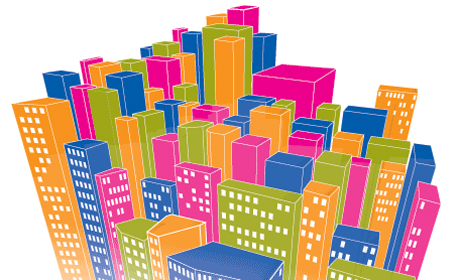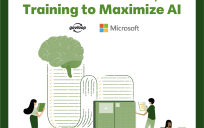GovLoop hosted its State and Local Tech Trends Virtual Training, an all-day, virtual event with 5 different training webinars and resources to help state and local govies do their job better. Be sure to read the other recaps here.
Instead of keeping integral data in a folder on the desk, what if there was a whole new way to utilize data? What could that mean for the future of government? There’s a concept many in government still aren’t truly familiar with, a way to interact with necessary data that brings a new facet to the entire experience. Data visualization just might be a solution to apathetic data usage.
Kelly Jin, Data Visualization Lead of the City of Boston, and Christine Carmichael, Marketing Director at Government Tableau, led a mid-morning training. They spoke on How the City of Boston Built a Culture of Data Driven Decisions.
Carmichael started off with the mission behind data visualization: “It’s here to help people seen and understand data. We’re faster at processing, understanding and making data-driven decisions when we can see data. Data visualization is a breakthrough innovation, utilizing computer graphics, databases and human-computer interaction.”
On top of that, there has been a lack of accessibility for users to understand, utilize and analyze data. Carmichael noted that there are “more than 615 million information workers,” that are in need of rapid-fire analytics. “Data visualization doesn’t require degrees and backgrounds to understand open data projects in different departments. It’s very easy to understand, which is exactly what we’re going for.”
A City of Innovation
For the city of Boston, there is a distinct need for data visualization in ensuring the city moves forward at a sustainable rate. With more than 650,000 residents within 48 square miles and 800 miles of streets, the city possesses more than ten cabinets, all actively working to keep the city going. “So, we had to figure out how to take all that data being produced,” Jensen said, “and do something constructive with the information.”
“Paramount amidst the process is improving the quality of life for our citizens, whether the data projects are external or internal,” Jensen explained.
In the words of Boston Mayor Marty Walsh, “We’re building this vision from the inside out, by installing responsive innovative data culture in city government.” It’s not necessarily about systems and frameworks – contrary to what agencies might initially believe, a lot of what the city government focused on was changing the culture within.
“By thinking of the different cabinets as actual customers,” Jensen said, “we’re able to approach individual problems constructively, proactively and sustainably.”
What can Data Visualization do for Government?
“The last thing we want to build is something that sits on someone’s desk,” Jensen said. “It needs to be used by the person the data system has been built for.” With that in mind, the analytics team brought together traditionally separate efforts: process and performance management, open data and public engagement, data analytics and product development together to create powerful data visualization systems.
By meeting with department heads, identifying key department metrics needed, and figuring out where to source the needed data, the analytics team was systematically able to set up integrated, understandable data visualization databases that could be utilized seamlessly. By starting simple, the team was able to carefully ease individuals who might not otherwise use data into the systems. “When you start too complex in individual interactions, there’s no way to move the solution forward,” Jensen said. “The first touch point is critical – the person is either going to be interested in working with you or scared away. By being clean in initial designs, the iteration process can only move forward from there.”
In an interesting example of the data visualization integration, Jensen shared the case study of September 1 for Boston residents. Annually, September 1 is the single most traffic-filled day for Boston, a city with more than 100 colleges and universities. Although the tracking process was initially static, the analytics team set up a map of Boston that helped improve decisions around traffic, street cleaning and routes.
As a result of data visualization, the city of Boston has begun being able to make decisions that directly improve the lives of its citizens. In another example that Jensen shared, working with the city’s fire department allows for the shifts of the employees – critical to the safety of the city – to be synced in a manner that was both interactively understandable and utilized by the department. Instead of making disjointed decisions that might endanger citizens’ lives, data visualization allowed Boston officials to make the right decision when staffing their fire departments.
Is Data Visualization Possible for All?
Ultimately, data visualization can only be successful if a few things are lined up. “You need to have the constant support of organizational leadership,” Jensen said, pointing to the continued support of the mayor, “You need to push that this is priority for your agency. In proving your value before others prove it to be of value, there’s a possibility for improvement, and for success in building out data visualization systems.”
It’s an encouraging note to improve and keep in mind.




Leave a Reply
You must be logged in to post a comment.